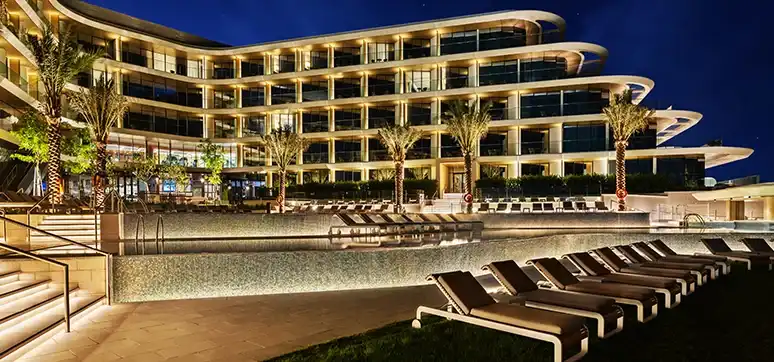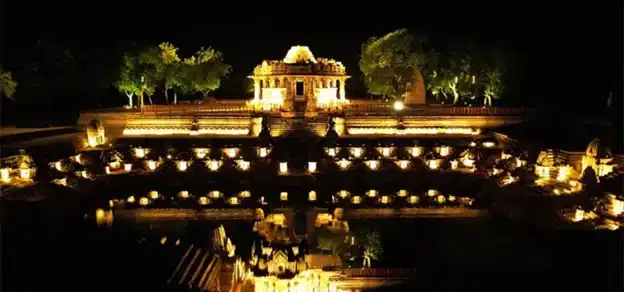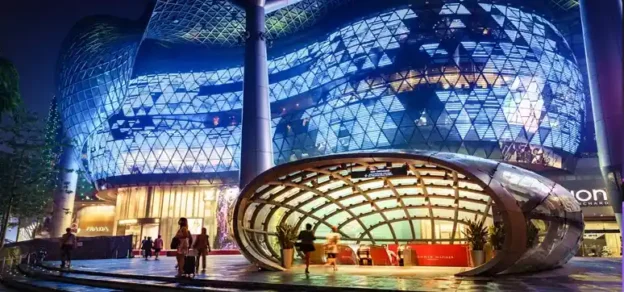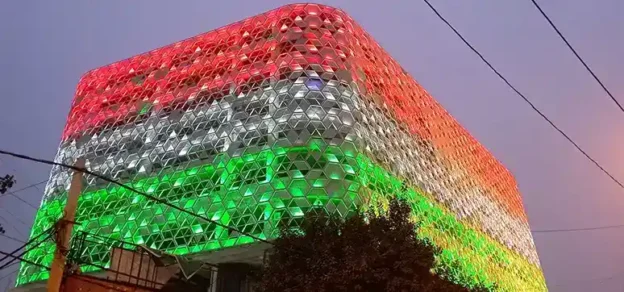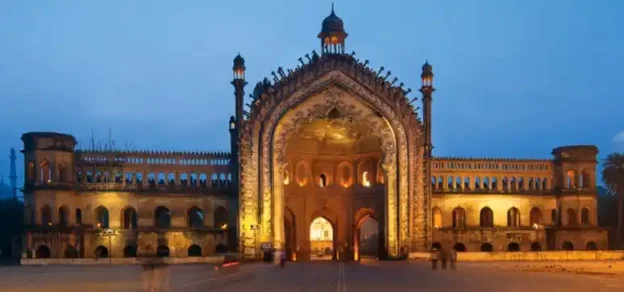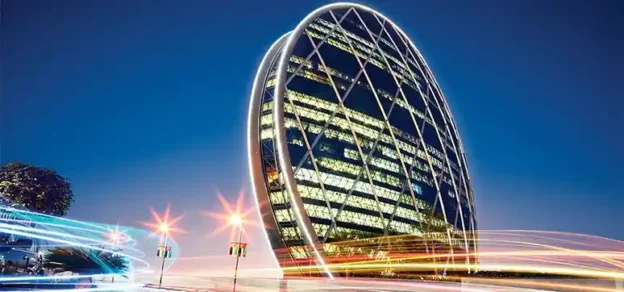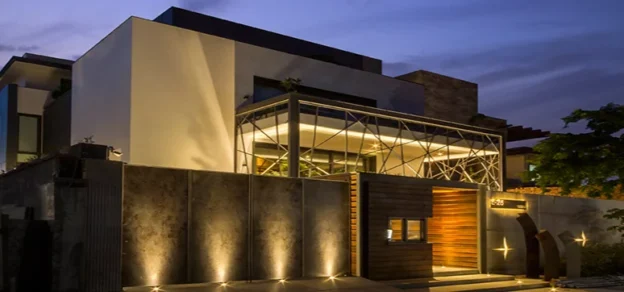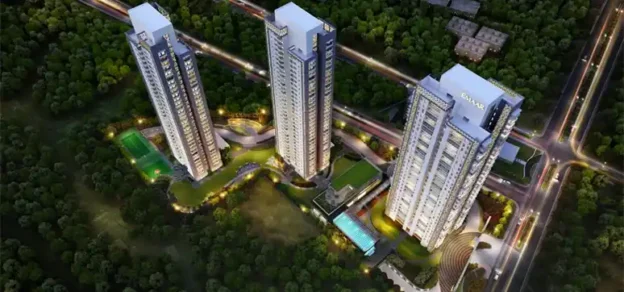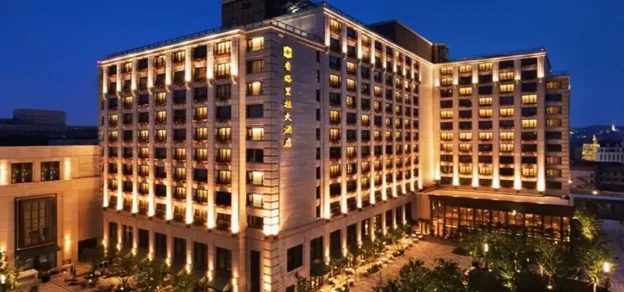It is possible to enhance and activate the façades of the buildings at night using the attraction and excitement element, such as artificial lighting, and then construct additional effects or conceal specific parts of the building because the design is less clear for the design idea during the night. The search is restricted to artificial illumination, which supports the general presentation of building facades using the stereoscopic deletion and addition approach.
It is considered wasteful and inappropriate for a structure to utilise outdoor light inefficiently. As a representation of creativity, originality, and invention, on the other hand, bright and bold visual produced through design and lighting is valued. Building façade lighting principles, their significance, and the caliber of this lighting distribution system are of utmost relevance and value in the technologically advanced world we live in today. We interviewed a few industry experts and here are the responses presented in this cover story on the current market trends, the latest technologies, future trends, and the codes & standards in the façade lighting industry. Read them here:
IMPORTANCE OF FAÇADE LIGHTING

Myriam Patricia Lopez Yanez, Lighting Director, The Red Sea Development Company says façade lighting defines a building’s identity, especially at night. The balance between light and darkness is crucial, and the features that are lit are as important as the ones left unlit. The way façade lighting is treated can also tell us about the type of building and its use, and mostly about the message or image that the developer would like to convey to the community and people upon seeing the building.
From an environmental perspective, façade lighting is also very important, as it will have a direct impact on the areas that surround it. People, sensitive species, and visibility to the stars can be highly impacted. Because of this, façade lighting can make a statement of the values of the owner, and their response to the environment. Boris Bao, Sales Manager, Hangzhou YD Illumination Co., Ltd explains the importance of façade lighting in the following pointers:

• Safety: Nothing is more important than safety. Many people prefer to use 220V voltage lamps over low safety voltage lamps, they think it’s easier to install, but in fact, low voltage like 12V, 24V, 36V, etc. will be more popular. Safety has become the consensus of more and more people. Also, a V-0 flame resistance grade is necessary.
• Lamps quality: Façade lighting is outdoor. So the environment is not as mild as indoors. Long exposure to the sun and rain is a test of the quality of the lamp. So IP68, IK10, and anti-UV 4-5 levels are important. No one wants their façade lighting project to be half lit and half broken right?
• Light intrusion: With the development of urbaniation and large population aggregation, if the elevation lighting is too bright, it will cause intrusion to people. CIE (International Commission on Illumination) has conducted relevant research.
METHODS OF FAÇADE LIGHTING
Nowadays technology allows developers to approach façade lighting in many ways, so the methods are almost infinite. For instance, there are state-of-the-art lighting technologies that can be fully integrated into the façade material itself, like a media façade. The lighting designer can use creativity to define the character of the building at nighttime, almost disintegrating it or giving it a new identity, says Myriam. As lighting technology develops, the light sources keep becoming smaller. They also become more capable of withstanding tough external conditions, such as high temperatures, UV light exposure, and even underwater environments. This allows lighting fixtures to be seamlessly integrated into the architecture in any environment.
Myriam adds, traditionally, lighting has been used to articulate the shape of the building by outlining its edges, grazing the surfaces, or enhancing selected features with accent lighting. In this sense, more than making a statement of its own, lighting is used to reinforce the character and design of the building.

According to Danish Sayed, Technical Design Manager, Nulty façade lighting works at different scales, activating the architecture of an individual building after hours or illuminating a wider night-time scheme to present it as one unified composition. Whatever the scope, the relationship between the architecture and lighting should be seamless. The light should reinforce the architect’s vision and enhance the way you see and experience that building or place for the better. Context is everything. An illuminated façade has to work cohesively with its surroundings to ensure that the building becomes part of the neighbouring landscape or urban environment. It is also increasingly an exercise in balance. As an industry, we need to strive harder to meet the design aspirations for a project whilst reducing unnecessary sky glow and light pollution.
Boris believes, for façade lighting, there are some common methods. One of them is using points or lines to outline the building, normal products are point light (pixel light, dot light) and linear light. Another method is using floodlighting, and colour rendering of the wall, normal products are flood light and wall washer light. Also, if people want to make a façade LED screen to play the animation for holiday or make an advertisement effect, we can use point light to do, one point light is one pixel, the higher the pixel, the sharper the image.
IMPACT OF FAÇADE MATERIAL ON LIGHTING

Myriam notes if used more conservatively, light completely relies on the material that it’s lighting to reveal itself. Where the material of a façade is solid and opaque, it will reflect the light showing the colour and texture of the surface. Alternatively, if the material is transparent or translucent, depending on the reflectance index and colour hues, lighting will react and reveal itself in the form of a glow. In the case of media façades, lighting can make the building almost ephemeral, completely changing its character at night. It becomes a screen onto which can be projected an animation or a movie. Or it can interact with the environment, for example, responding to the weather, movement of people, or traffic, all depending on how it has been programmed.
Light and materials are intrinsically linked, so a lighting designer will read the visual environment to improve the fabric of the building. Our role is to understand how the different material choices will respond to light and fine-tune the lighting to enhance the characteristics of that particular surface, finish, texture or tone. With textured finishes or flat surfaces, this is fairly straightforward. However, the process gets much trickier when you are responding to elements with reflective properties such as glazing or mirrors, observes Danish.
Façade Material’s Impact on Lighting
- Depending on the façade material, the installation method will be different. For example, if the façade material is concrete, we can install lights by screw. If the façade material is marble, then obviously direct large screws may not be allowed by the owner, we can make some steel structure to support the installation of lamps. If the façade material is a glass curtain wall, so the way of installation is not the same, we can along the glass gap or keel install lights.
- Impact of floodlighting affect efficiency. For indirect flood lighting, the lighting is to render the wall. For example, if the façade material is a glass curtain wall, we use a wall washer light directly may not get a good effect, in this case, it is better to install inside and light out.
– Boris Bao, Sales Manager, Hangzhou YD Illumination Co., Ltd
Latest Trends in Lighting Systems & Lighting Controls

According to Myriam, one interesting lighting trend is related to technology, such as interactive media façades, which is possible because light sources are now highly controllable. The same source can have different intensities, colours, and beam angles. Also, depending on the control protocol, every single light source can be individually controlled, like a pixel in a TV screen, which gives infinite possibilities. While this trend is interesting and reflects current technologies, it is unfortunately a contributor to light pollution. If opting for this approach, timing is key so that media façades are seen as art pieces and not simply part of the light noise in an environment.
Separately, in the case of environmentally cautious designs, the trend now is to use less light and instead be more conscious of the effect of lighting on the environment and the circadian rhythms of people and sensitive species, as well as its contribution to light pollution. In this sense, each single light source becomes meaningful, as it will be perceived more strongly. This approach respects the life around it and protects the visibility of the celestial bodies in the night sky, which have been part of the night sky for millennia. These days only a small percentage of young people around the world have been able to appreciate the beauty of the milkyway because of the effects of light pollution.
Danish notes that dynamic lighting allows to add interest to a façade and have complete control of the illumination. It gives you the power to create animated visual lighting that is linked to a time clock or astronomical clock. Projection is another technique that allows you to turn a building into a display surface and map videos or animations across the façade. Remote monitoring is improving connectivity and communication. Lighting systems can be linked to a building management system, which gives us real-time information about individual fittings and when they need to be fixed and upgraded. This is particularly important with façade lighting, where maintenance is a much trickier issue due to access restrictions.
In Boris’ view, façade lighting’s control system is dominated by DMX512. For façade LED screens, DMX is not necessary, SPI is more popular. “By the way, I think interactive control systems will become more and more popular in the future. For example, our company has completed some interactive control projects to realise the interaction between people and lights, which is more attractive to people”, says Boris.

Latest Technologies in LED Lighting
Danish presumes that the future is looking bright as LED technology is making us much more efficient. LEDs offer more output for less power. They are also decreasing in size and easier to adjust on-site, which means we can now use luminaires in areas where it was once impossible to mount a light fitting. As spill light is an ongoing issue for façade lighting, we must allow for adjustability in terms of fixtures and beams as this helps reduce the amount of unused light. About the latest technologies in LED lighting, the application of 3D printing technology in the lighting field is preferred. It is highly personalised, opines Boris.
Use of Façade Lighting as a Marketing Factor (creating Brand Names, Promotional Images, and Advertisements through Lighting on Façades)
Lighting as a marketing tool can be very powerful. It can be done in a very literal way, by using the façades of buildings as media screens. This way, façade lighting can be a great means of communication. However, this should be done mindfully, otherwise, our nightscapes will become very busy, contributing greatly to the light pollution index, suggests Myriam. She adds another subtle way of using lighting as a marketing factor is by making a statement on the company’s values. For example, at The Red Sea and AMAALA, façade lighting is kept to a minimum and used strategically to fully respond to our environmental core values. We are very conscious of the effect of lighting on our sensitive species such as turtles, bats, birds, and of course our guests.
The colour temperature, brightness, and optics are purposely selected to ensure minimal impact on all wildlife. This also stretches to our guests, as unwanted light at night that trespasses into interior areas can affect their circadian rhythm and sleep quality. According to Danish, lighting design is a balancing act at the crossroads of technology and creativity. As technology develops, there’s more scope to get creative and use light to add an extra layer of dressing to a façade. We can project text and visuals onto the controllable LED pixels on a façade to communicate a branded message or use colour-changing technology to convey a company’s identity.

It’s tempting to use these techniques in busy places where it is much harder to stand out from the crowd, but this has led to cities getting brighter while rural areas remain relatively dark. It’s a difficult issue to solve in a country like India, so we need better guidelines on how buildings should be illuminated and what percentage of a façade should be used for branding. It is also important that the lighting design industry continues to educate all concerned about the negative effects of excessive façade lighting. We need to put more emphasis on using light where it is required to enhance the night-time environment and let illuminance levels fall away wherever they are not.
For this point, in fact, this effect has been achieved for a long time, and our company has done a lot of cases, through the control system in the façade lighting display fonts, animation, has achieved a good advertising effect. Point light sources are very good products at this point, says Boris.
Future Trends & Technologies in Façade Lighting
Myriam notes in line with society’s growing care for the environment, and our greater focus on health and wellbeing, today’s trends are leaning towards more conscious lighting design. It is expressive, it can define the character of a building, but at the same time, it responds to the environment and current concerns such as energy saving, light pollution, and personal wellbeing.

Danish opines, the future of façade lighting is all about where developments in the controls space will lead us. While LED technology has been on an upward curve for several years now, we are only at the cusp of where Wireless, Bluetooth, the Internet of Things, and AI advancements can take us. The smart control technology is developing on a day-to-day basis and has the potential to completely revolutionise the way that we approach façade lighting. It will give us the capacity to design living and breathing buildings that respond to people’s behaviour and self-adjust accordingly. It’s exciting to think about how much more energy efficient and human-centric our designs may become as a result.
Standards, Local Norms & Regulations for Outdoor/Façade Lighting
In Saudi Arabia, there are no specific standards or regulations such as façade lighting. However, in the case of a few developers, like The Red Sea Development Company, we are targeting the highest global LEED certifications, as well as following our lighting guidelines based on the most stringent international standards to minimise light pollution. Step by step, other regional projects are starting to follow our lead. More generally, the whole Kingdom is following Vision 2030 and so we are seeing a desire for an energy-saving approach, which will impact how façades are being lit at night, says Myriam.

According to Danish, a key consideration for the lighting designer in a tropical environment such as India is the impact of dust on the building façade. It can accumulate in a city in just a few days and persist for prolonged periods. Repeated exposure to dust can damage the optical system of a luminaire and sometimes lead to unattractive colour shifts, so we need to be mindful of where light fittings are positioned on a façade. This means placing luminaires in an accessible and well-ventilated location to make it easier for them to be maintained or replaced.
“As for the future of façade lighting, I am not qualified to generalise, because different countries have different cultures and different owners have different preferences and ideas, which will affect the final presentation effect of façade lighting. What we can do is present the real lighting effect that the owner wants to achieve, and that is enough”, Boris. Of course, energy conservation and environmental protection must be more and more attention to, this is the trend of the environment. In addition, the application of 3D printing in the field of lighting is worth expecting, Boris adds.
Checkpoints for Façade Lighting
Façade lighting needs to respond to the environmental needs and location. For example, façade lighting in an urban setting will be very different from the one in a reserve. It needs to minimise light pollution. Finally, façade lighting should respond to the architecture, seamlessly integrating so that it does not have a negative effect day or night, opines Myriam.
Conclusion
Any structure or building that would be lifeless may be improved and given more vitality with façade lighting. These lights are available with a range of mounting choices, several design modifications, and varying colour temperatures. Experts in architecture can try out as many different appearances as they like to produce the ideal result. The building may also stand out, provide more aesthetic value, and become more appealing with the help of the façade lights.
